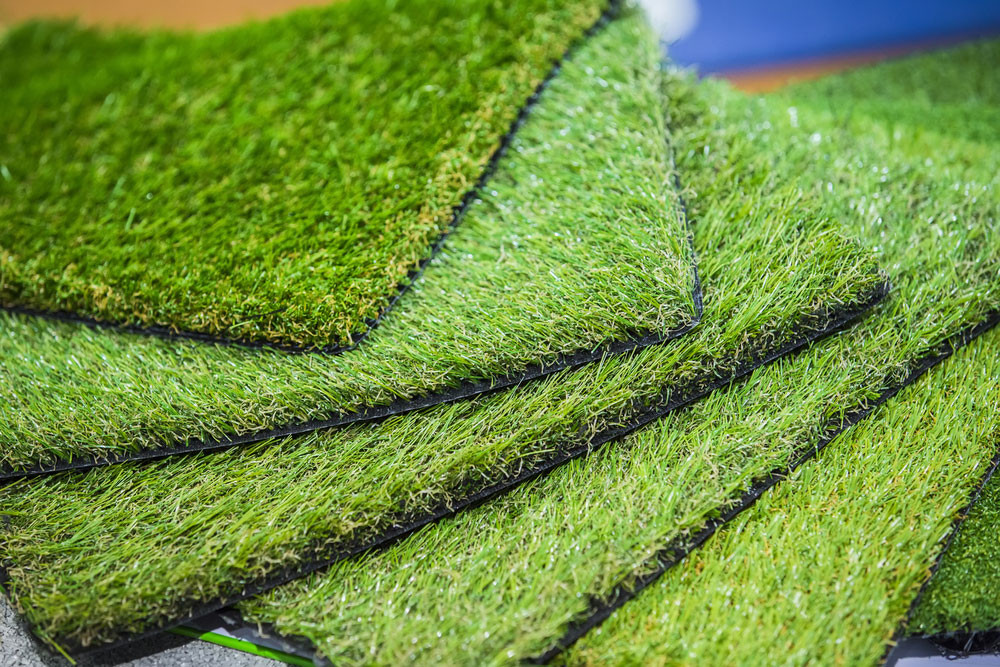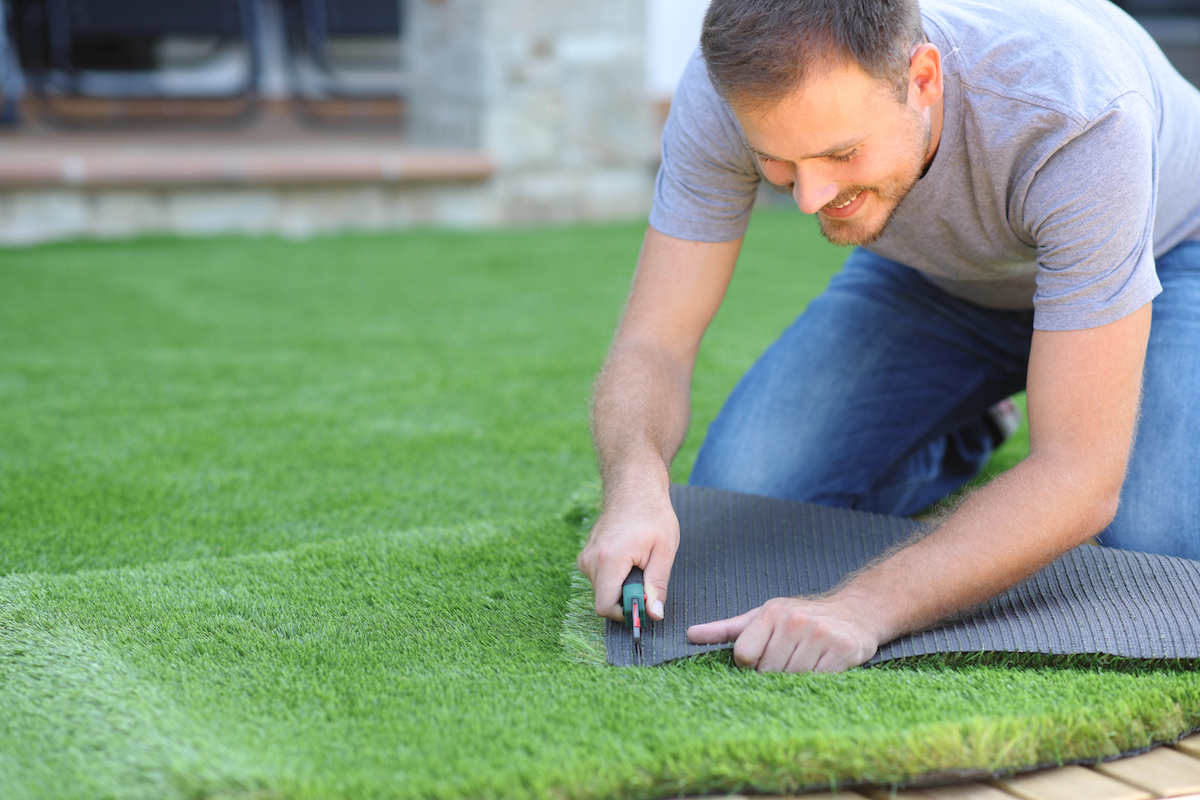Cost-Effective Turf Installation Phoenix AZ for a Low-Maintenance Lawn Option
Cost-Effective Turf Installation Phoenix AZ for a Low-Maintenance Lawn Option
Blog Article
Explore the Environmental Advantages of Opting for Synthetic Grass Solutions
The adoption of man-made lawn options presents a compelling possibility to resolve pressing ecological difficulties. By significantly minimizing water use and minimizing the application of harmful chemicals, these alternatives not only advertise lasting landscaping however also shield neighborhood ecological communities.
Water Preservation Benefits
One of the most significant advantages of synthetic lawn is its capacity to preserve water. In comparison, man-made grass does not need watering, significantly minimizing the total need for water sources.
By eliminating the need for routine watering, man-made turf adds to sustainable landscape methods and aids alleviate the ecological impact of too much water consumption. The preservation of water expands to the reduction of overflow, which can lead to dirt erosion and waterway contamination.
Additionally, the setup of synthetic grass permits property owners and municipalities to allocate water resources extra successfully, concentrating on vital uses such as drinking water and agriculture. The change towards man-made lawn not only promotes accountable water use but likewise aligns with wider ecological objectives focused on preserving natural deposits.
As neighborhoods progressively focus on sustainability, the water conservation benefits of artificial lawn present an engaging situation for its fostering in business and property landscape design projects.
Minimized Chemical Use
The transition to synthetic grass substantially decreases the dependence on chemical treatments frequently made use of in natural lawn upkeep. Typical lawn monitoring typically involves the application of chemicals, fertilizers, and herbicides to advertise growth and control insects. These chemicals can position threats to human wellness, local wildlife, and the atmosphere, adding to soil and water contamination.
In comparison, synthetic grass removes the requirement for these damaging materials. As soon as installed, it requires minimal upkeep, mainly consisting of regular cleaning and seldom infill replenishment. This reduction in chemical use not just benefits the prompt atmosphere however likewise adds to broader ecological stability. By reducing the release of synthetic substances into the ecosystem, fabricated lawn promotes healthier dirt and water supply.
Moreover, the lack of chemical runoff related to artificial lawn installations assists shield neighborhood rivers from contamination, supporting water life and maintaining biodiversity. Arizona artificial turf. As neighborhoods progressively prioritize lasting methods, going with man-made lawn offers a practical service that straightens with environmental conservation objectives. Via this change, homeowner can delight in lavish green rooms without endangering environmental health and wellness, paving the method for an extra sustainable future
Lower Carbon Impact

Furthermore, the setup of synthetic grass can lead to considerable water conservation. All-natural grass call for considerable amounts of water for irrigation, which not just includes to the carbon impact connected with water removal and therapy however additionally stress local water resources. On the other hand, synthetic grass requires very little maintenance, requiring no watering, thereby substantially lowering water use and its associated energy costs.
In addition, the durability of man-made lawn adds to its decreased carbon effect. With a life-span of approximately 15 years or even more, the need for frequent replacements is diminished, causing much less waste and reduced energy usage in production and getting rid of traditional turf options. Generally, synthetic grass presents a lasting alternative for environmentally aware landscape design.
Habitat Preservation
Habitat preservation is a vital factor to consider in the dispute over landscaping selections, specifically when contrasting artificial grass to all-natural grass. All-natural grass yards frequently require comprehensive upkeep, consisting of making use of fertilizers, herbicides, and chemicals, which can negatively affect neighborhood ecological communities. These chemicals can leach right into the soil and waterways, damaging native plants and animals and interfering with local environments.
Synthetic grass eliminates the need for harmful chemicals, thus securing nearby wild animals and maintaining the stability of bordering ecological communities. The installation of fabricated lawn can lead to the conversion of former yard areas right into more biodiverse landscapes, such as pollinator gardens or indigenous plant locations, which can sustain neighborhood wildlife.
Eventually, the change to synthetic lawn not just conserves water and minimizes upkeep initiatives yet likewise promotes an extra harmonious connection in between human tasks and the native environment, advertising habitat conservation while doing so.
Long-Term Sustainability
Long-term sustainability is a critical consider reviewing the advantages of artificial grass over typical grass lawns. One of the most considerable benefits of fabricated turf is its sturdiness; it can last approximately 15-20 a fantastic read years with minimal maintenance, whereas all-natural grass needs regular reseeding and replacement. This longevity lowers the requirement for continuous sources, such as water, plant foods, and pesticides, which are necessary for preserving a healthy grass yard.
In addition, artificial lawn adds to a reduction in carbon discharges connected with lawn care equipment. Standard yards typically require gas-powered mowers, leaners, and blowers, every one of which add to air contamination. Arizona artificial turf. On the other hand, synthetic grass eliminates the requirement for such equipment, promoting a cleaner environment
Additionally, the production of synthetic grass progressively utilizes recycled materials, improving its sustainability profile. As makers take on environmentally friendly techniques, the ecological footprint of synthetic grass remains to lessen.

Conclusion
The fostering of synthetic grass services offers considerable environmental advantages, including considerable water preservation, decreased reliance on damaging chemicals, and a lower carbon footprint. Man-made lawn help in maintaining natural habitats by lessening land disruption and advertising long-term sustainability with the usage of resilient products. Collectively, these variables emphasize the capacity of synthetic grass to add positively to environmental wellness and use a viable choice to standard landscaping methods in an increasingly resource-conscious world.
In contrast, synthetic grass does not need watering, considerably reducing the overall need for water sources. By decreasing the launch of synthetic substances right into the environment, man-made grass promotes healthier dirt and water systems.
In addition, the installation of artificial grass can result in significant water preservation. In comparison, artificial turf needs very little maintenance, needing no watering, consequently dramatically reducing water use and its associated power prices.

Report this page